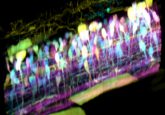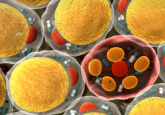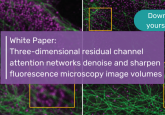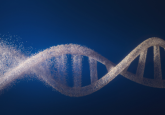Observing chemical reactions within the cell
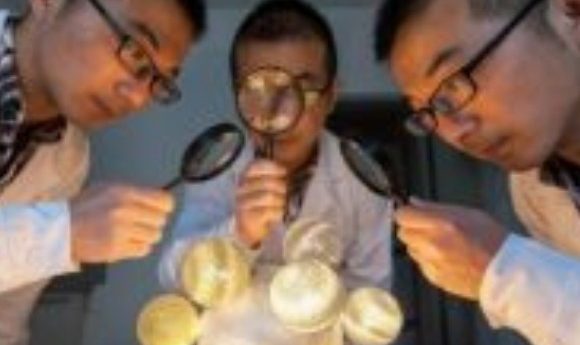
Living cells stay healthy and whole through a host of chemical reactions. Yet to date, scientists have been unable to visualize those reactions in such small volumes. Now, researchers have developed a new microscopic technique to offer a super-resolution view.

Super resolution fluorescence correlation microscopy allows researchers to observe small fluorescent dye molecules that attach and detach to relatively large, spherical micelleshas in experiments that imitate the biological environment.
Credit: .IPC PAS, Grzegorz Krzyzewski
Living cells and the organelles within them are responsible for countless chemical reactions to regulate overall energy needs and metabolism. Virtually all biological aspects of life are based upon biochemical reactions—but there is a lack of knowledge of how these reactions occur in actual living systems.
“Historically, most of the techniques used to look at chemical reactions are best suited to macroscopic measurements, where you put a uniform sample into some measurement chamber, ideally containing a lot of substrates and no constituents other than those necessary for the reactions,” explained Krzysztof Sozanski, a researcher at the Polish Academy of Sciences. “Obviously this is very far from the natural environment of most biochemical reactions where the reaction chamber is a cell or its compartment.”
Until now, the resolution of microscopy techniques was not refined enough to follow the kinds of chemical reactions that occur in such small volumes. Given the success of a type of fluorescence microscopy called STIMulated Emission Depletion (STED) microscopy and a new type of optical microscopy called Fluorescence Correlation Spectroscopy (FCS) in increasing spatial and time resolutions while looking at cell membranes, Sozanski and colleagues wondered if they could develop a system that could study chemical processes in bulk solutions. They partnered with PicoQuant GmbH to modify the STED-FCS system so that it could work in three dimensions. They then validated the new model with experimental data.
“STED-FCS offers extremely small size and precise localization of the studied volume in the sample. It allows us to retrieve the diffusion rates and concentrations of probes, as well as provides information on their interactions based on changes of the probe size upon binding to some other molecule,” Sozanski said. “In addition, since it is a fluorescence technique, it allows for selective labeling of molecules of interest, thus enabling studies in crowded and complex biological systems. And it only requires a super-resolution microscope with single photo detection—which, more and more, is becoming standard equipment in biochemical laboratories.”
Sozanski hopes the technique will be used to better elucidate the chemical reactions in living cells—offering a new path towards a more quantitative understanding of the biochemistry of living systems.
